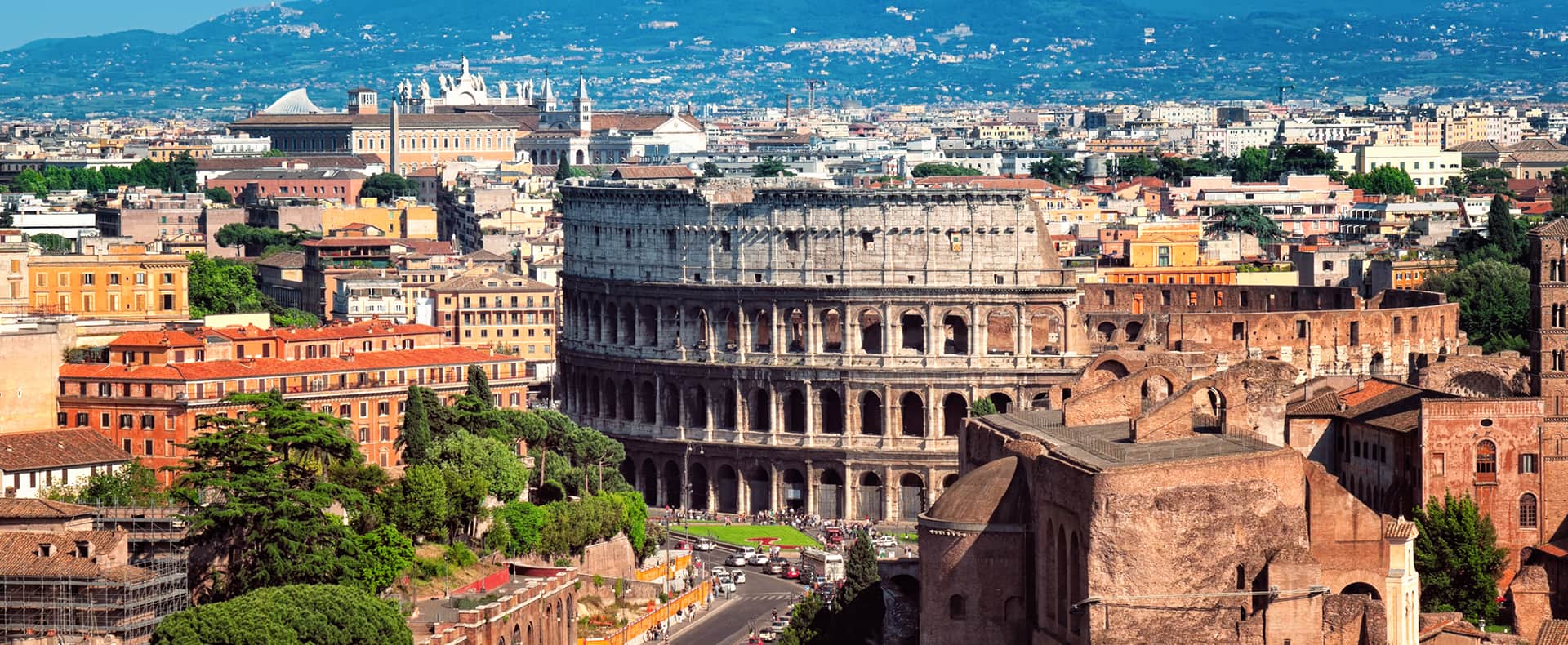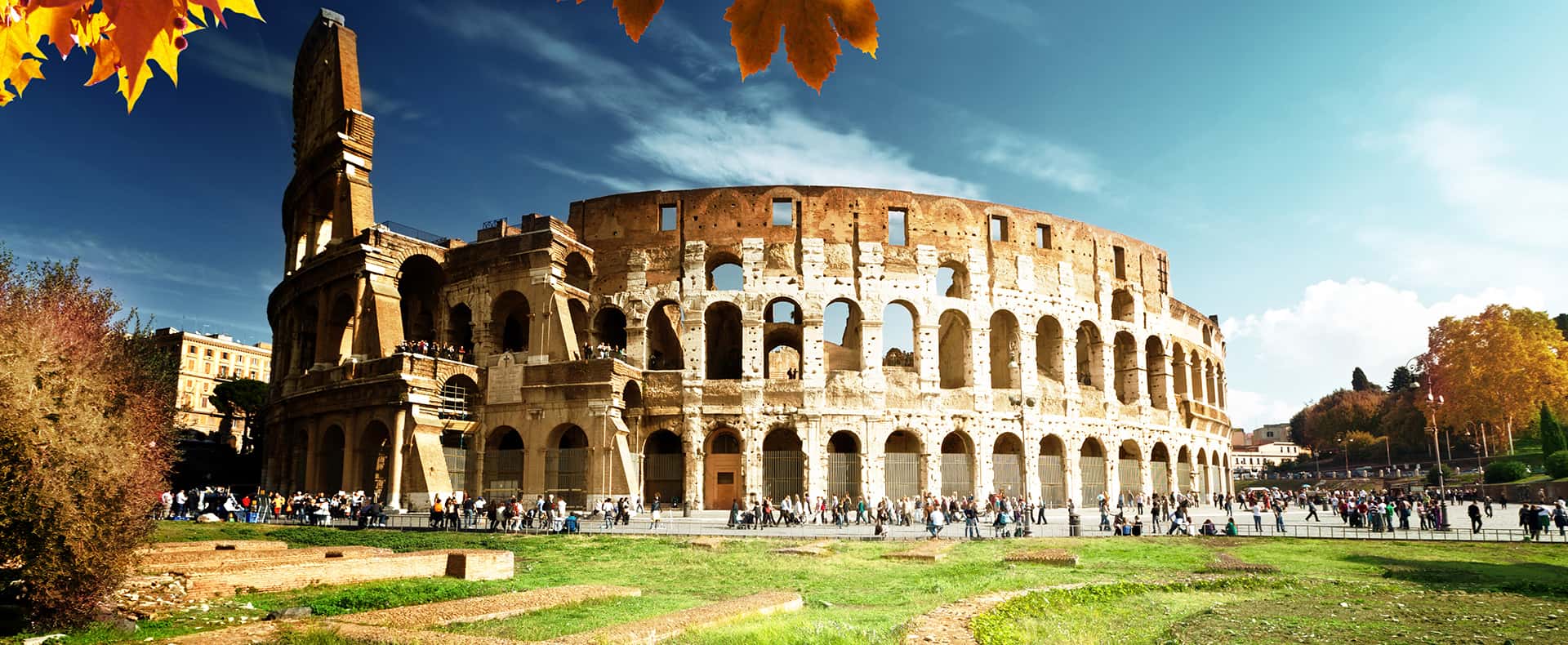Why Visit the Colosseum
They say all roads lead to Rome and it's not for no reason: ancient Romans were known for their impressive engineering skills, and numerous unique examples of their architectural genius still stand eminently all around Europe. In fact, most of the roads built by Romans are the basis of the present-day broad road network in dozens of European countries!
Yet, the most powerful monument of ancient Rome, and one of the most visited archeological sites worldwide, the great Colosseum, is an unmissable UNESCO-listed sight located in the heart of Rome. Did you know that it is also one of the New 7 Wonders of the world? In any case, the massive Colosseum is a “must” experience when exploring the Eternal City!
The ancient amphitheater was called “Anphitheatrum Flavium” by the Romans, meaning Flavian Amphitheater. It was built from around 70 AD to 80 AD. The arena was designed as a place of entertainment and was the setting of usually bloody scenes showing vicious animal hunts, executions, or gladiatorial combats which was the main event.
Inventive Romans loved a good show and came up with ways to feature special effects that could even involve flooding the whole central area of the theater.
Shockingly, to hide from the burning Italian sun, they even made it possible to cover the entire arena with a special huge cloth which was pulled over the top of the Colosseum by hundreds of soldiers before the show. Impressive, right?
The bloodthirsty population of ancient Rome loved it! Usually, 65,000 spectators watched the shows and sometimes up to 70,000, which was the maximum capacity of the Colosseum.
The senators’ seats were on the lowest section and had the best view while women and others of less importance were on the top section furthest away from the stage. The emperor had his own separate overwhelmingly decorated box with the best view of the acts.









